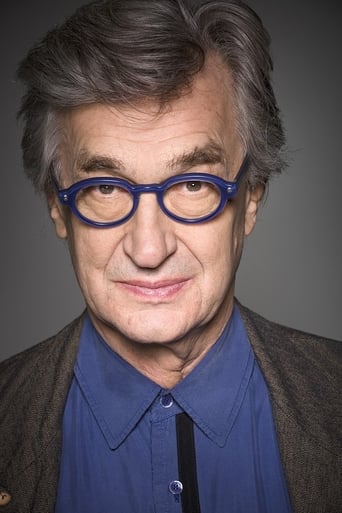Kattiera Nana
I think this is a new genre that they're all sort of working their way through it and haven't got all the kinks worked out yet but it's a genre that works for me.
Catangro
After playing with our expectations, this turns out to be a very different sort of film.
Jonah Abbott
There's no way I can possibly love it entirely but I just think its ridiculously bad, but enjoyable at the same time.
Bob
This is one of the best movies I’ve seen in a very long time. You have to go and see this on the big screen.
Tim Kidner
I'm more interested in film than fashion and this DVD was part of my ten disc Wim Wenders 'Collection'.Japanese fashion designer Yohji Yamamoto is the focus of this documentary by the German film-maker. He returns to Tokyo, Yamamoto's Tokyo and his fashion studios to see him at work. The thrust of this docu is to be about the Spring fashion show in Paris, in which Yamamoto is taking part.The title 'Notebook On Cities & Clothes' is so called as Wim always sees far beyond the periphery of what is ordinary, what most people see. This is what makes him and his docu's so fascinating. Both he and Yamamoto compare cities, how cities can be nation-less, "I don't feel Japanese, I feel I'm a Tokyo-ite" says Yohji. Natural comparisons between Paris and Tokyo get discussed too.Wenders' is never afraid to try new techniques to supplement his visual palette and here he found (this is 1989) that filming the designer at work with normal 35mm film was both intrusive and cumbersome, whereas video was not. The downside, at least then, was the quality, though he's keen to agree but is sure which direction both the industry and his work is going, equipment wise.Wim will show and run up to two or three small actual TV screens within the main one, showing a general scene, one with the person narrating and another showing that same person working. It never looks too cluttered and without the computers of today must have made syncing them quite tricky.Yamamoto is happy to chat and philosophise on camera. He seems most at ease leafing through books of old black & white photos of Japanese working people and their practical, working clothing, their faces and body language telling their stories, not the garments they wear. He'll then later compare the Japan of today (well, 1989) thinking that anything it wants and chooses can be simply bought.If you're a big fan of Yamamoto, or Wenders, you'll give it a higher score than I did. It's naturally dated but remains interesting, rather than riveting viewing.
mrweird
Wim Wenders follows Japanese fashion designer Yohji Yamamoto as he puts together a fashion show. In truth, the subject matter is tedious, Yohji Yamamoto has little of interest to say, and he says it excruciatingly slowly. Wenders tries his best to convince us that the designer is a great Artist, by covering the creative process, the little changes in the cut of the cloth to achieve what is the perfect shirt or dress. The close-knit coterie of disciples eager to translate the Artist's vision to the cloth. It's almost convincing, but the film fails to persuade me that fashion industry is anything more than superficial. By implying that fashion design is potentially as profound and mysterious as other arguably more 'worthy' art-forms (such as cinema), the documentary teeters on pretension.However, the film is certainly worth watching. There are some interesting meditations on the nature of cities and identity (it's filmed in both Tokyo and Paris). It's most impressive aspect is the exploration of digital video technology (quite appropriate given the documentary subject matter). When filmed (1989), this would have been cutting edge, and it's likely that Wenders experiments here benefited subsequent films most notably the dream sequences in Until The End of the World. The pixelated texture and more lurid colour palette of video contrast nicely with the celluloid sequences, and there are some effective (albeit now primitive) sequences with talking-heads video playback against celluloid footage in the background. The overall effect is meditative and other-worldly.In summary, a flawed, dated but still interesting film.
carll-2
Wenders have succeeded in turning an assignment he got by the Pompidou centre into a work that's actually rather fascinating. It's a really fresh essay film. It doesn't tell so much about it's subject the fashion designer, but reflects on more abstract issues like art and fashion, and time and timelessness, and subjectivity and objectivity.Although I felt it was very beautiful and fascinating, I thought that it maybe lacked in urgency somewhat - the fashion designer and all the persons in the film remained really distant. But at the same time I found it fresher and not so over-elaborated as some of Wenders movies. For friends of essay-movies and the late movies of Godard it's highly recommended.
Firas
I can't say much about the movie. It is principally interesting because it shows the similarity of the creativity of two artists (a fashion designer and a film director) with the emphasis on the first one. It is in fact a creative documentary about the two of them. There was also an attempt to define fashion and identity in our modern world. It is a typical Wim Wenders movie. The photography is marked by his style. This movie or documentary becomes sometimes boring. The emphasis on the differences between the movie camera and the video camera was interesting but it was often tiring

